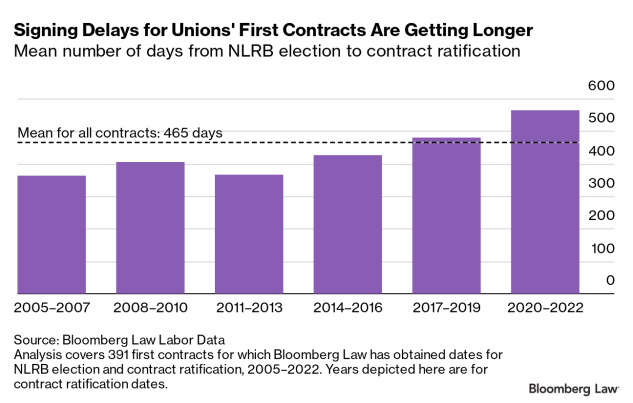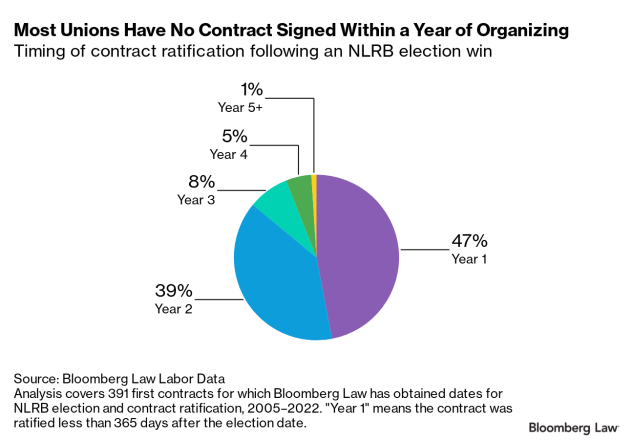Losing a union vote is rarely welcome news for an employer. If a union wins certification in a secret ballot election conducted by the National Labor Relations Board (NLRB), then a company has a legal obligation to bargain in good faith with the union over a labor agreement that governs virtually all the terms and conditions of employment for the represented workforce. That process may take longer than many people realize.
According to a recent article from Bloomberg Law, the time it takes to negotiate a first contract with a union has increased from an average of 409 days to now an average of 465 days – or well over one year.
This chart breaks down the average length of time for this process since 2005:
In fact, based on additional analysis by Bloomberg, the vast majority of first-time labor agreements take longer than one year to complete:
Why does bargaining a first union contract take so long? For anyone who hasn’t been through the collective bargaining process, negotiations generally entail both sides putting on competing proposals covering the full gamut of issues governing the workers’ employment. From wages to benefits to vacations to overtime procedures to job bidding to work rules, there is a lot of ground to cover. And the pandemic injected a host of new issues for both sides to cover as well, such a personal protective equipment, social distancing policies, etc. In situations where the parties are working toward a first contract, that often means they are building the contract from the ground up and have no foundation to work from. In contrast, when the parties have had a collective bargaining agreement in place for years and terms are relatively mature, the process typically goes much quicker given the prior bargaining history they have to work from.
One labor law nuance worth noting here is that under current NLRB precedent, a union enjoys a “certification bar” for up to one year after being certified post-election. That means employees cannot file a decertification petition to oust the union during that time, even if the workers are dissatisfied. Often times when negotiations drag on for more than a year and employees do not perceive they are getting value from their representation, they file a petition with the NLRB to remove the union before a labor contract is finalized. This makes the 465 day average time for a first agreement even more interesting.
This will be an interesting data point to monitor in the coming years, particularly since Starbucks has gone from zero to more than 200 unionized locations in the last nine months or so. There are no reports of Starbucks reaching any first union contracts yet, and if that process stretches out, the sheer numbers there likely will bump that 465-day average even further. Stay tuned.















